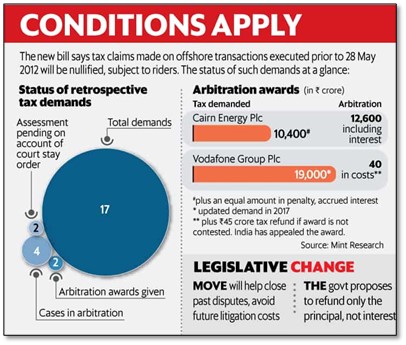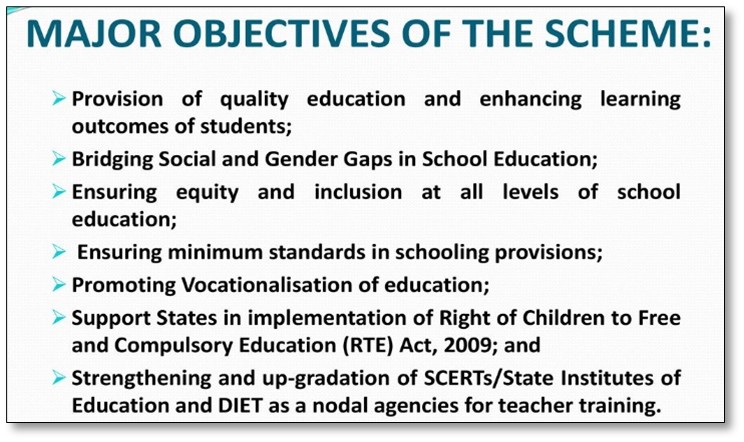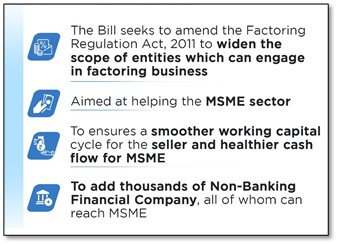Tuesday, 10th August 2021
Five-point framework for maritime security
In News
Prime Minister of India proposed five basic principles for enhancing maritime security during an open debate on the matter by United Nations Security Council (UNSC) on the matter.
About the News
- A week into India’s United Nations Security Council (UNSC) month-long presidency, India chaired a debate on maritime security. The meeting was meant to discuss ways to effectively counter maritime crime and insecurity and strengthen coordination in the maritime domain.
- India adopted a consensus building approach by initiating consultations among all Security Council. The debate on maritime security was one of three signature events being organised by India during its presidency of the Security Council – the other two will focus on counterterrorism and peacekeeping.
- The Indian Prime Minister expressed need to make an inclusive framework on maritime security based on the vision of SAGAR (Security And Growth for All in the Region). This vision is for a safe, secure, and stable maritime domain.
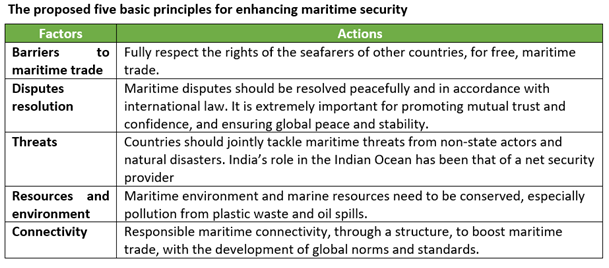
Significance of the Principles
- First such Discussion: The UN Security Council has discussed and passed resolutions on different aspects of maritime security and maritime crime. However, this will be the first time that maritime security will be discussed in a holistic manner as an exclusive agenda item in such a high-level open debate.
- Safety through Laws: The statement promotes safe and secure shipping while ensuring freedom of navigation in line with international laws, and welcomes mutual legal assistance and other types of law enforcement cooperation on transnational organised crime.
- Co-operation: It calls for strengthening cooperation for maritime security, including against piracy and terrorist activities, as well as against transnational organised crimes. It also seeks enhanced cooperation to protect critical infrastructure, including cross-border infrastructure.
Sources:
PM Suggests 4-Point Strategy to Achieve $400-B Exports in FY22
In News: The Prime Minister has listed four factors to boost exports and urged all stakeholders to identify 75 new products and destinations to broad base exports to mark 75th Independence Day.
Factors to Boost Exports
- Increasing manufacturing manifold (qualitatively competent manufacturing)
- Removing Logistical Problems
- Coordination between exporters and the government and
- Finding more global markets for Indian products
Government Schemes on Export Promotion
Foreign Trade Policy 2015-20 and other schemes provide promotional measures to boost India’s exports with the objective to offset infrastructural inefficiencies and associated costs involved to provide exporters a level playing field. Some of these include:
- Exports from India Scheme: This Scheme encompasses Merchandise Exports from India Scheme (MEIS) and Service Exports from India Scheme (SEIS).
- Duty Exemption & Remission Schemes: Remission of Duties and Taxes from Export Products (RoDTEP) aims to replace existing Merchandise Exports from India Scheme for exports of goods from India.
- Agriculture Export policy 2018: To double agricultural exports from present US$ 30+ Billion to US$ 60+ Billion by 2022 and reach US$ 100 Billion in the next few years.
- Market Access Initiative (MAI) Scheme: Financial assistance is provided for export promotion activities on focus country, Industry & Trade Associations, State Government Agencies and Indian Commercial Missions abroad to do market surveys, publicity campaigns, participate in International Trade Fairs, set showrooms/ warehouses etc.
- Trade Infrastructure for Exports Scheme (TIES), Niryat Bandhu Scheme are other such schemes to boost exports from India.
Potential of the Indian Economy and the need for Diversification
- India’s exports account to about 20% of the GDP.
- A considerable portion of India’s exports comprised items from just a handful of sectors such as petroleum products, gems and jewellery, engineering goods and pharmaceuticals shipped to destinations like USA, China, and UAE.
- With mining, coal, defence, and railways opening-up, India’s exporters are getting more scope for growth.
Source:
India and UNSC
In News
India took over the Presidency of the United Nations Security Council (UNSC) on August 1, from France.
About the News
- 2021-22 tenure: This is India's first presidency in the UNSC during its 2021-22 tenure as a non- permanent member of the UNSC. India will again preside over the Council in December next year, the last month of its two-year tenure.
- This is India's eighth tenure in the UNSC. Previously, India had been elected as a non-permanent member of the UNSC in 1950, 1967, 1972, 1977, 1984, 1991 and 2011.
- Agenda for the Tenure: During the presidency of UNSC, India will be focusing on maritime security, peacekeeping, and counter-terrorism.
- India is also expected to call for more transparency in listing and delisting of entities and individuals by the UN sanction committees. Getting permanent membership in an expanded council is also high up on the agenda

India’s Pursuit for Permanent membership at UNSC and why India deserves this reward?
- India’s participation in the UN system:
- Pioneer Member: In 1919, India signed the Treaty of Versailles that ended the First World War and created the League of Nations, the precursor of the UN. India is also the original member of the UN that signed the Declaration by the UN at Washington on 1 January 1942 and participated in the historic UN Conference of International Organization.
- Active Participant: India has been an active participant in all initiatives undertaken by the UN, including the discussions on the Agenda for Peace and the Agenda for Development, the Millennium Development Goals, and various UN summits, like on climate change.
- Supporter of Reforms: India also contributed by being instrumental in establishing the G77 of developing states at the UN, other than supporting the establishment of various bodies such as the UNICEF, the UNDP, the UNEP, and the restructuring the UN and the UN Development Fund.
- Peacekeeping: In the arena of peacekeeping, India has remained the largest cumulative contributor of UN peacekeeping troops with around 180,000 troops since the 1950s.
- Leader of the Developing world: In addition, India has always seen itself as a champion, a ‘moralistic force’ of the so called Third World, the developing states.
- India’s intrinsic value: By any objective criteria, such as population, territorial size, GDP, economic potential, civilizational legacy, cultural diversity, political system and past and ongoing contributions to the UN, India is eminently qualified for permanent membership.
- India’s great power ambitions:
- Power Ambitions: Foremost in Indian calculus lies the Indian aspiration of the institutionalised big power status the permanent seat in the Security Council would confer on India right away. It would provide India the leverage to expand its global geo-political and geo-economic clout.
- Rule taker to Rule maker: As India’s international profile and capabilities rise, India wishes to shift its international position from a rule taker to a rule maker (a system shaping role).
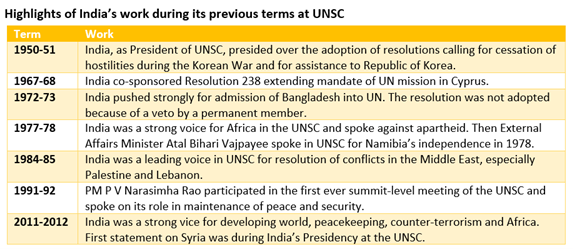
Factors constraining India’s ambition of Permanent membership
- Non-inclusive Structure: The UNSC was composed by victors of the WW-II to suit their interests and the UN Charter was designed accordingly, giving to themselves the permanent membership and veto power in the council. The geopolitical, strategic, economic realities have changed considerably since then, but the UNSC has not reformed itself to these global realities.
- The China challenge: Currently, Beijing is asserting itself at the global stage much more vigorously than ever. It heads at least six UN organisations and has challenged the global rules. China’s aggressive behaviour in the Indo-Pacific and the India-China border tensions, make China’s Veto a big hurdle for India’s UNSC ambitions.
- National interests over global: Reforms in the UNSC requires an amendment to the UN charter, wherein any reform of the Security Council requires the support of at least two-thirds of UN member states and all the permanent members. The stance of P5 members to expansion has been varying as per their national interest.
- India’s policy stands: Challenges to Indian aspirations at the UNSC are lack of enough Indian government resources for multilateral diplomacy, insufficient engagement with the normative aspects of many UN Security Council issues, and an over-reliance on entitlement as the bedrock of India’s claims to permanent membership.
What are the Steps India is taking in pursuance of permanent membership at UNSC?
- Strategy: India has adopted a multi-layered strategy to assume the permanent seat in the Security Council. The Indian strategy of “revisionist integration” into the Security Council consists of two components: Maximising support in the UN General Assembly and Minimising resistance in the UN Security Council.
- G77 and NAM: India hopes that its continued leadership of various Global South forums such as G 77 and NAM, would garner much needed numbers in the UNGA. This is amply reflected in India’s strong defense of the principle of sovereignty and the constant voluble criticism of the “Responsibility to Protect.”
- P5 Support: Also, India’s growing strategic partnerships with the P5, including the historic nuclear deal with the US in 2005, reiteration of historic ties with Russia paint a favorable picture for Indian hopes in the Security Council by the existing permanent members.
- Membership in new groups: India has also formed the G4 comprising Brazil, Germany, itself and Japan, its “coalition of the willing”, a “collaborative strategy” to negotiate reforms of the Council.
Way Forward
- India has emerged as a foremost, singularly acknowledged rising power seen by most states, great and small, as making a legitimate claim to a place in the changing architecture of global governance, including the UN Security Council. Though the Indian desires repeatedly articulated at the highest levels of government remain unfulfilled and seemingly intractable, its ideas and diplomacy, bilateral and multilateral and its reforms highlight a powerful consciousness in India.
- There is need to reform the United Nations, including the Security Council, and make it more democratic and participative. Institutions that reflect the imperatives of 20th century won’t be effective in the 21st. It would face the risk of irrelevance; and we will face the risk of continuing turbulence with no one capable of addressing it
Question: Discuss the reasons why India deserves a permanent seat in the UNSC. What are the hurdles for India in achieving this goal?
Sources:
- India to take over as President of UNSC on August 1
- India’s pursuit of United Nations Security Council reforms
- India assumes UNSC presidency
- All about the UN Security Council and India’s two-year term as non-permanent member
- Explained: India at the United Nations high table
- India at UNSC: How long it has to wait for the permanent seat?
- Will the UN Security Council ever be reformed?
- India’s Effort to Reform the United Nations Security Council Demands a New Mindset
This Day in History - French Revolution
On August 10, 1792, Louis XVI of France was imprisoned. As the French Revolution (1787–99) continued, the country's monarchy was effectively overthrown. King Louis XVI and his wife, Marie-Antoinette, were imprisoned and were eventually guillotined. Louis XVI and Marie Antoinette were executed for treason. Louis had failed to address France's financial problems, instigating the French Revolution that eventually descended upon him.
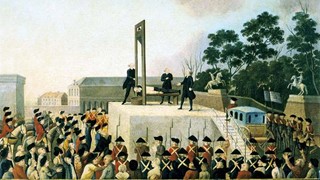
Sources:
Image of the Day - Sheepshead Fish
This is the image of a fish with human-like teeth, caught in the United States. The fish has been identified as a sheepshead fish, which has several rows of molars for crushing prey. The sheepshead’s teeth are similar to those of humans since they, too, are omnivores. The fish is commonly found along the Atlantic coast. They can grow up to 3 feet long and eat a variety of oysters, clams, crustaceans, and plant matter.

Source:
Saansad Adarsh Gram Yojana (SAGY)
- Context: Steps have been taken by the Government for the successful implementation of the Saansad Adarsh Gram Yojana (SAGY) in adopted Gram Panchayats.
- Under the Yojana, Members of Parliament (MPs) are responsible for developing the socio-economic and physical infrastructure of three villages each by 2019, and a total of eight villages each by 2024.
- The first Adarsh Gram was developed in 2016, and two more in 2019. From 2019 to 2024, five more Adarsh Grams must be developed by each MP, one each year.
- The MP would be free to identify a suitable gram panchayat for being developed as Adarsh Gram, other than his/her own village or that of his/her spouse.
- The Ministry of Rural Development has brought out a compilation of 127 Central Sector and Centrally Sponsored and 1806 State Schemes for convergence under SAGY.
- The scheme was launched in 2014, on the birth anniversary of social activist Jaiprakash Narayan.
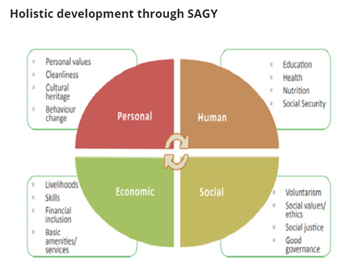
Source:
- Steps taken by Government for the successful implementation of the Saansad Adarsh Gram Yojana (SAGY) in adopted Gram Panchayats
- Sansad Adarsh Gram Yojana: Government to put onus on MPs to develop villages
- Key highlights of the recently launched Saansad Adarsh Gram Yojana
Image Source:
PM-DAKSH - Edukemy Current Affairs
- Context: Ministry of Social Justice and Empowerment has launched ‘PM-DAKSH’ (Pradhan Mantri Dakshta Aur Kushalta Sampann Hitgrahi) Portal and ‘PM-DAKSH’ Mobile App.
- This is to make the skill development schemes accessible to the target groups - Marginalized persons of SC (Scheduled Castes), OBCs, Economically Backward Classes, De-notified tribes, Sanitation workers including waste pickers, manual scavengers, transgenders and other similar categories.
- Under this Yojana, eligible target group are being provided skill development training programs on:
- Up-skilling/Re-skilling
- Short Term Training Program
- Long Term Training Program and
- Entrepreneurship Development Program (EDP).
- These training programs are being implemented through Government Training Institutes, Sector Skill Councils constituted by the Ministry of Skill Development and Entrepreneurship and other credible institutions. The scheme is being implemented from the year 2020-21
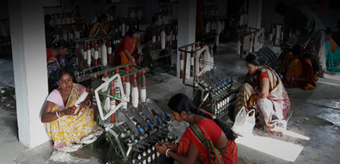
Source:
- Dr. Virendra Kumar launches ‘PM-DAKSH’ Portal and ‘PM-DAKSH’ Mobile App
- Pradhan Mantri Dakshta Aur Kushalta Sampann Hitgrahi (DAKSH)
Image Source:
Faceless Assessment Scheme: Income Tax
- Context: The Income Tax (I-T) Department has notified three official email IDs to register grievances, under the Faceless or e-Assessment Scheme.
- Under the faceless assessment system, a taxpayer or an assesses is not required to visit an I-T department office or meet a department official for income tax-related businesses.
- This scheme was launched by the Union government in 2019 to achieve ease of doing business and bringing in more transparency and certainty in tax matters.
- Faceless assessment is administered through separate units within the tax department each of which has specific and important role in the process, viz assessment units, verification units, technical units and review units.
- The scheme brings greater flexibility for taxpayers and professionals representing before tax authorities along with substantial time savings on account of travel to the tax office, waiting time, etc.

Source:
- I-T Dept issues three email IDs for registering grievances
- I-T department issues 3 email IDs for registering grievances under faceless assessment scheme
- Faceless assessment: A paradigm shift in Indian revenue audits
Image Source:
CHAPEA Mission by NASA
- Context: NASA is seeking applications for its new mission called the Crew Health and Performance Exploration Analog (CHAPEA), related to Mars.
- The mission is set to begin in 2022 and will give four successful applicants the chance to live and work in a 1,700 square-foot module that is created by a 3D printer and is called the Mars Dune Alpha.
- The simulated quarters include a kitchen, areas for medical, recreation, fitness, work, crop growth, a technical work area and two bathrooms.
- This habitat will simulate what it feels like to carry out missions on Mars including resource limitations, equipment failure, communication delays and any other environmental stressors.
- The crew will be expected to perform simulated spacewalks, scientific research and use virtual reality and robotic controls and exchange communications.
- The results from this analog mission will provide scientific data that will help in validating the systems that will be used for actual missions to Mars and help in solving problems for spaceflight research.

Source:
Image Source:
An urban job guarantee scheme is the need of the hour
The article talks about the crisis in urban employment scenario and applauds the recommendation of the parliamentary committee to have an urban employment scheme on the lines of MNREGS. The government has not conducted a holistic survey on the way migrant workers were impacted due to pandemic induced lockdown. Further, the PLFS highlights the job recovery, which is skewed and misleading. Most of the recovery in jobs has happened in unpaid workers category or disguised employment. Youth has been most affected, and the average wage has gone down since the pandemic.
Why you should read this article?
- To understand the impact of pandemic in urban employment
- To study statistics and data which indicate towards job and wage loss
Source:
The shaky foundation of the labour law reforms
Essence: Article is written in backdrop of draft rules framed for labour law reforms which is believed to be incomplete because the rules have not covered some aspects of the Codes. The reasons may be- a rushed process of the enactment of codes and the framing of rules; court directives; etc. Article further discusses aspects concerning labour market governance in India. India would score impressively on the ease of doing business exercise by any agency including the World Bank by the mere execution of labour reforms without them being implemented.
Why should you read this article?
- To get an overview of Labour law reforms in India and what are the issues associated with it.
- To know the aspects concerning labour market governance in India.
- To understand what steps should be taken to tackle the same.
Source:
International efforts in creating disaster resilient infrastructure
Background
- Mahanadi delta is not only the home to dolphins and turtles but also home to more than 21 million people.
- The area is ravaged by floods, cyclones, and tropical depressions. Climate change has also affected the water availability especially during the summer season.
- The region is facing issues like persistent water logging, low agricultural productivity, loss of migratory fisheries, declining incomes, social conflicts, migration, and health hazards due to limited availability of safe drinking water and sanitation.
- Hard infrastructure that was built as a short-term solution for flood defence has disrupted the natural linkages between wetlands and water.
Importance of natural ecosystem
- Restoration of natural ecosystem can reduce the risk of disasters and improve the capacity of the vulnerable communities to bounce back if a disaster occurs.
- The wetlands can buffer excess flood waters and can acted as water reservoirs during dry periods.
International efforts in conserving the natural ecosystem
- Wetland International has been working with CSO, NGO to in greening the coastline by restoration if wetlands preventing sedimentation by strengthening the embankments, inducing salt tolerant crops to restore the natural ecosystem.
Source:
Share the article
Get Latest Updates on Offers, Event dates, and free Mentorship sessions.

Get in touch with our Expert Academic Counsellors 👋
FAQs
UPSC Daily Current Affairs focuses on learning current events on a daily basis. An aspirant needs to study regular and updated information about current events, news, and relevant topics that are important for UPSC aspirants. It covers national and international affairs, government policies, socio-economic issues, science and technology advancements, and more.
UPSC Daily Current Affairs provides aspirants with a concise and comprehensive overview of the latest happenings and developments across various fields. It helps aspirants stay updated with current affairs and provides them with valuable insights and analysis, which are essential for answering questions in the UPSC examinations. It enhances their knowledge, analytical skills, and ability to connect current affairs with the UPSC syllabus.
UPSC Daily Current Affairs covers a wide range of topics, including politics, economics, science and technology, environment, social issues, governance, international relations, and more. It offers news summaries, in-depth analyses, editorials, opinion pieces, and relevant study materials. It also provides practice questions and quizzes to help aspirants test their understanding of current affairs.
Edukemy's UPSC Daily Current Affairs can be accessed through:
- UPSC Daily Current Affairs can be accessed through Current Affairs tab at the top of the Main Page of Edukemy.
- Edukemy Mobile app: The Daily Current Affairs can also be access through Edukemy Mobile App.
- Social media: Follow Edukemy’s official social media accounts or pages that provide UPSC Daily Current Affairs updates, including Facebook, Twitter, or Telegram channels.


